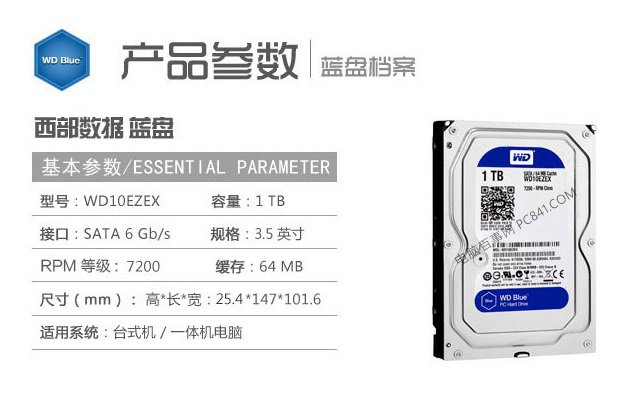Many people think that the hard disk used by the server is the same as that of ordinary computers, but they search on the e-commerce platform“ Server hard disk ”You will find that, Price Compared with ordinary hard disk It is generally much more expensive 。 A penny is worth a penny, and a penny is worth a penny. This article will talk about the difference between a server hard disk and an ordinary hard disk.


The server
Due to the high price and small capacity of SSDs, the mainstream of server hard disks is traditional mechanical hard disks. On the surface, there seems to be no difference between a server hard disk and an ordinary hard disk. They are all 2.5/3.5 inches. Mechanical hard disks are all composed of magnetic heads and disks. What are the differences? Here's a brief inventory of the server hard disk. What's more expensive than ordinary hard disk?


Common hard disk parameters
1. Server hard disk is more stable and reliable
Ordinary computers are basically intermittent operation, so the stability and security are not demanding. Because servers need to run 24 hours a day, and many servers run on a monthly or annual basis, they only stop running for a while during maintenance.
Therefore, the server hard disk has high requirements for stability and reliability, which makes the server hard disk have higher security requirements in terms of materials and design. The server hard disk adopts S M. In addition to A.R.T technology (self-monitoring, analysis and reporting technology), RAID technology can also be used to ensure the stability of data. In addition, in order to avoid accidental collision, the server hard disk has been specially treated in terms of external force resistance. Generally, it can withstand 300G to 1000G of impact force.
Ordinary hard disks do not support S M. A.R.T technology also rarely uses RAID magnetic array technology (except for high-end computers). The full English name of RAID is "Redundant Array of Inexpensive Disks". In Chinese, it is called independent redundant disk array, which is often referred to as disk array. Similar to connecting multiple hard disks in series, it is mainly used to improve the performance and storage of hard disks.
2. The server hard disk is faster
An ordinary mechanical hard disk usually rotates at 7200 rpm, while older hard disks even only rotate at 5400 rpm. The speed of the server hard disk is higher, which can generally reach 7200 rpm or more. The mainstream level is 10000 rpm/15000 rpm, or even higher.

Server hard disk parameters
In addition, the cache of the server hard disk is larger than that of the ordinary hard disk. For example, the cache of ordinary hard disks is generally 8MB, 16MB, and the larger one is 64M, while the server hard disks are generally 64M, 128M, or higher
Therefore, the server hard disk is generally much faster than the ordinary hard disk, and its data transmission throughput per second is also stronger than the ordinary hard disk.
3. The server hard disk supports hot swap
Ordinary mechanical hard disks do not support hot swapping. Most server hard disks support Hot Swap, which can pull out or insert a hard disk when the server is not down, and the operating system can automatically identify changes to the hard disk.
For example, the SCSI hard disk has an SCA2 interface (80 pin) that specifically supports the hot plug technology. When used with the SCSI backplane, the hard disk can be hot plugged easily. This technology is very necessary for servers running 24 hours a day. While ordinary hard disks generally do not support hot swapping, there is a big difference between server hard disks and ordinary hard disks in this point.
4. Other differences
At present, there are three kinds of hard disks used in the server market, SATA hard disk, SCSI hard disk and SAS hard disk SATA hard disks are mainly used in low-end servers, while SCSI and SAS hard disks are targeted at high-end servers.
Most servers use SCSI hard disks with large data throughput and low CPU occupancy. The external transmission rate and internal transmission rate of SCSI hard disk are much higher than those of ordinary hard disk. It generally adopts Ultra160 SCSI, Ultra320 SCSI and other standards, and the data transmission rate per second can reach 160MB and 320MB respectively. At present, the mainstream SCSI hard disk adopts the Ultra320 SCSI standard.
SCSI hard disks can only be used through SCSI interfaces. Some server motherboards integrate SCSI interfaces, and some have special SCSI interface cards. One SCSI interface card can connect seven SCSI devices, which is unmatched by ordinary hard disk interfaces.
In general, once the server hard disk is damaged, it will bring immeasurable losses to the enterprise. Therefore, the server hard disk is better than the ordinary hard disk in terms of security and shock resistance. In addition, it has advantages in hot plug and speed, which is why the server hard disk with the same capacity is much more expensive than the ordinary hard disk.





